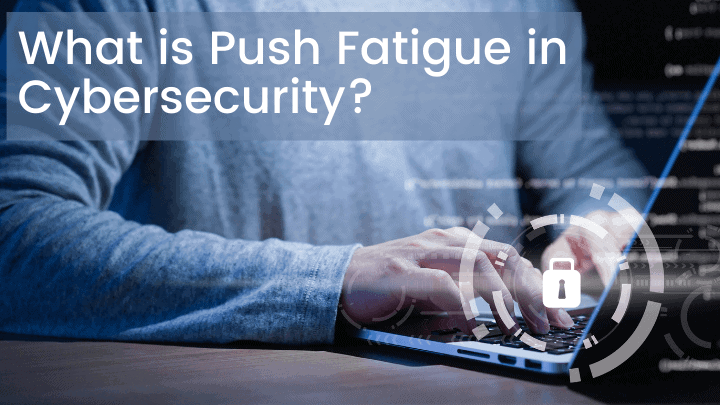
Push Fatigue is the latest buzzword in technology and cybersecurity arena. The internet is the gateway and home to a variety of cyber threats that it seems impossible to have a computing device without it. The endless number of cyber threats out there can easily paralyze employees who run the IT infrastructure of a business or any organization.
Unlike the fatigue we experience caused by COVID-19, IT teams have to deal with the imminent cyber threats because of the sudden shift to remote working. Cybercriminals have created stronger methods to infiltrate private networks to steal company information and hack digital infrastructures. The problem arises when users are starting to ignore these warnings, believing that nothing will reverse the outcome. To understand this, you need to learn about push fatigue.
What is Push Fatigue?
Push fatigue, also referred to as ‘security fatigue’ refers to the reluctance or weariness to follow computer security. To address this, companies today have created advanced security measures to help IT managers overcome push fatigue while embracing constant vigilance to cyber threats. One example is the access control management solution that works based on user proximity. This helps IT teams automate much of the security process and makes it easy for IT administrators to manage asset security.
Given the growing concern on the increasing complacency over cybersecurity, this article we’ll discuss the issue of push fatigue and ways to overcome this.
What causes Push Fatigue?
The amount of information, resources, and methods to prevent cyberattacks have gotten employees, particularly IT administrators, wearier than ever.
The increasing concern towards push fatigue is an important matter because of its potential implications in organizations and everyday life. It’s a pressing issue that needs immediate solutions given that the majority of our activities are done online, from shopping, communication, telehealth, and banking, to name a few.
The term ‘push fatigue’ came from the concept of ‘compassion fatigue,‘ a feeling of complete hopelessness and emotional exhaustion from the onslaught of intense emotional stimulus. With regard to push fatigue, the emotional stimulus takes the form of cybersecurity measures which has taken a toll on today’s IT professionals.
There are plenty of factors that contribute to push fatigue. We cannot blame our IT managers to feel sick and tired of entering passwords into every computing device only to change them after a few weeks or even days. In some cases, IT teams have to remember over 30 separate passwords and update them regularly. This is where push fatigue comes in, which can sometimes compel the user to reuse and recycle passwords. Failure to build secure connections is another symptom of push fatigue. In today’s remote work landscape where people have to work from home, employees are seeing security practices as a nuisance that prevents them to log into their work quickly. As a result, they refuse to log into the VPN when connecting to unsecured Wi-Fi connections.
Software updates also contribute to push fatigue. For some, constant notifications about software updates are not only annoying, but also create anxiety and disturb workflow. Time-crunched IT employees will put off these ‘mundane’ updates to prioritize other important tasks.
How to overcome Push Fatigue?

Experts believe that reversing user apathy is one way to reduce push fatigue among IT professionals. The toughest challenge in convincing employees to embrace cybersecurity measures is they don’t have the chance to witness other’s behavior. Our computer- and internet-based lives have become so confidential that it’s hard to identify which are common practices and the accepted security norms.
Building a healthy security culture and user education helps in promoting positive social influence surrounding cybersecurity practices. By identifying the targets, threats, and actions, IT professionals will understand their roles and security risks related to their jobs and digital interactions. In addition, organizations should provide their IT teams the resources to determine possible threat scenarios and how to detect and respond to them.
Another way is to work with managed service providers that specialize in enhanced corporate cybersecurity compliance. These companies have developed tools with wireless authentication that protects networks from data exposure and internal breaches through proximity-based authentication solutions. These include centralized password management, two-factor authentication (2FA), and comprehensive auditing. All these reduce support costs and time while improving compliance and security within the organization.
The bottom line
Cyberattacks have been evolving over the years, and there’s no better time to act than now. There are various threats to Cybersecurity that you must be aware of. The extent of these threats has posed bigger challenges on business, which can cost the company’s reputation and financial health.
The suggestions above will help you keep up with cybersecurity needs while preventing the effects of digital threats. These methods can potentially reduce push fatigue so that IT employees can make better decisions for the organization.
